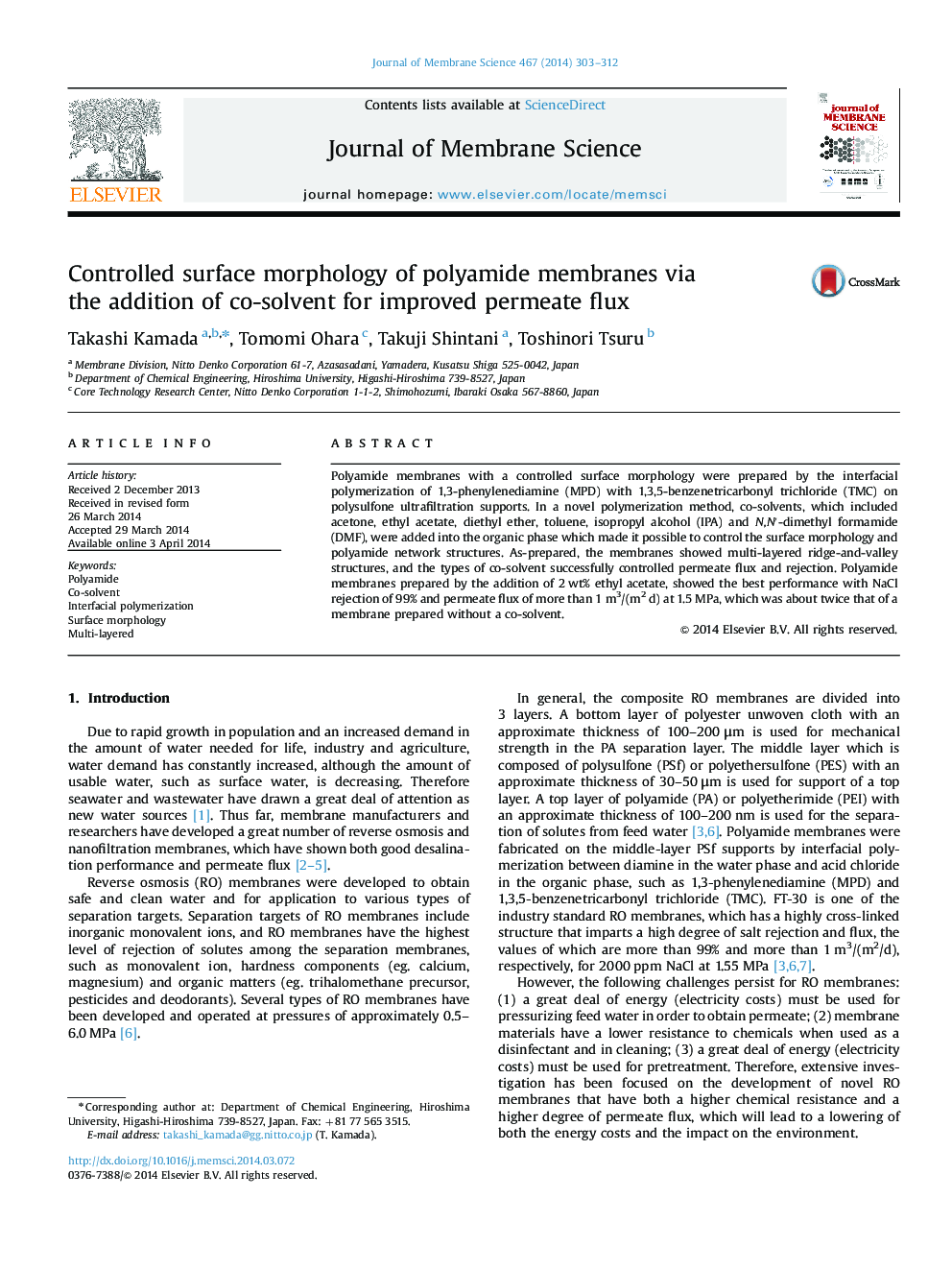| Article ID | Journal | Published Year | Pages | File Type |
|---|---|---|---|---|
| 633427 | Journal of Membrane Science | 2014 | 10 Pages |
Abstract
Polyamide membranes with a controlled surface morphology were prepared by the interfacial polymerization of 1,3-phenylenediamine (MPD) with 1,3,5-benzenetricarbonyl trichloride (TMC) on polysulfone ultrafiltration supports. In a novel polymerization method, co-solvents, which included acetone, ethyl acetate, diethyl ether, toluene, isopropyl alcohol (IPA) and N,Nâ²-dimethyl formamide (DMF), were added into the organic phase which made it possible to control the surface morphology and polyamide network structures. As-prepared, the membranes showed multi-layered ridge-and-valley structures, and the types of co-solvent successfully controlled permeate flux and rejection. Polyamide membranes prepared by the addition of 2Â wt% ethyl acetate, showed the best performance with NaCl rejection of 99% and permeate flux of more than 1Â m3/(m2Â d) at 1.5Â MPa, which was about twice that of a membrane prepared without a co-solvent.
Related Topics
Physical Sciences and Engineering
Chemical Engineering
Filtration and Separation
Authors
Takashi Kamada, Tomomi Ohara, Takuji Shintani, Toshinori Tsuru,
